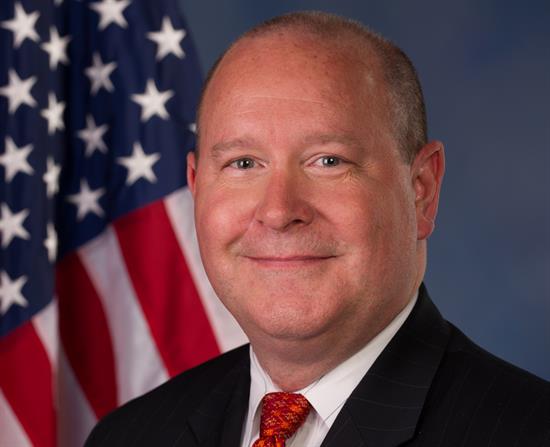In the News
With COVID-19 front and center, Congress likely to beef up HHS budget
Washington,
February 26, 2020
Tags:
Healthcare
With the CDC saying Tuesday that it’s not if but when COVID-19 becomes more widespread in the U.S., now is not the time to cut the budgets of programs and agencies in the Department of Health and Human Services (HHS). That message was repeated throughout a hearing Wednesday, Feb. 26, in which the House Energy and Commerce Subcommittee on Health quizzed HHS Secretary Alex Azar on both the president’s fiscal 2021 budget request for HHS and the department’s efforts to prepare for a broader outbreak of the novel coronavirus. Although it was released 10 days after Azar declared COVID-19 a national public health emergency, the proposed budget, with its 10% reduction in HHS funding, was prepared in December before the novel coronavirus emerged, the secretary said. To respond to the spreading outbreak, the administration has submitted a supplemental funding request for at least $2.5 billion, with half of that coming from new funding and the other half being shifted from other sources. The supplemental funds would be used to support all aspects of the U.S. response, including public health preparedness and response efforts; public health surveillance, epidemiology, laboratory testing and quarantining costs; advanced R&D of new vaccines, therapeutics and diagnostics; advanced manufacturing enhancements; and the Strategic National Stockpile. Funds also would be made available, as necessary, to states that are part of the current national response. Azar stressed the “at least” in the funding request, adding that the supplemental funds would support the response through fiscal 2020, which ends Sept. 30. Depending on how COVID-19 spreads, HHS would need more funding in fiscal 2021. He also acknowledged that, in light of the coronavirus emergency, the administration may have to rethink the proposed $200 million cut in the Biomedical Advanced Research and Development Authority (BARDA) budget. BARDA’s mission includes helping to prepare for pandemics, as well as disaster and terrorist threats. Azar promised the subcommittee that he would work with congressional appropriators to ensure that BARDA is adequately funded. But BARDA isn’t the only HHS agency that would see cuts under President Donald Trump’s proposed budget. The CDC, NIH and other agencies also would have funding reductions. “Congress has a job to do to restore the money for these agencies,” subcommittee Chair Anna Eshoo (D-Calif.) said. “These cuts are shameful.” Rep. Larry Bucshon (R-Ind.) reminded his colleagues that funding bills have to start in the House. As with all presidents, Trump’s budget is just a proposal; it will be up to Congress to actually pass a budget. The same is true for the supplemental funding request. When lawmakers asked for a commitment that HHS will quickly reimburse states for their efforts to combat the coronavirus, CDC Director Robert Redfield couldn’t give it, since that all depends on when Congress approves the supplemental funding. Calming the fears The proposed cuts in the fiscal 2021 budget weren’t the only concern at the hearing. Despite Azar stressing that the $2.5 billion supplemental was just a starter, several lawmakers criticized the paucity of the administration’s request. Rep. Diana DeGette (D-Colo.) noted that even the House minority leader, Kevin McCarthy (R-Calif.), had said that at least $4 billion was needed, without shifting funds from other research areas such as Ebola. Rep. Jan Schakowsky (D-Ill.) also urged more funding. “I find it incomprehensible that you’re asking for a molehill when what’s really needed is a mountain,” she told Azar. She repeated a CDC warning that a widespread COVID-19 outbreak in the U.S. could severely impact everyday life. Azar and other officials tried to calm the fears. “America’s risk is low, but that could change quickly,” Azar acknowledged, adding that HHS is working to keep the risk low. With COVID-19 outbreaks growing in Korea, Italy and other countries, as well as in China where it all started, Eshoo recognized the need for reassurance. “We want facts,” she said. “We want to bring the temperature down. We want to bring the fear factor down.” FDA Commissioner Stephen Hahn tried to allay fears about potential drug shortages. The agency identified 183 drug manufacturers in China, with only 20 sole-sourced drugs. No shortages are anticipated for those sole-sourced drugs, he said. The picture isn’t quite so clear for devices, which make up the majority of FDA-regulated products made in China. Hahn reminded the subcommittee that while drug companies are required by law to inform the FDA of potential supply disruptions, device makers have no such requirement. He said there could be spot shortages of personal protective equipment, and he expects more pressure in that space, especially with respirators, which are largely manufactured outside the U.S. Rep. Michael Burgess (R-Texas), ranking member of the subcommittee, said if there’s a silver lining to COVID-19, it’s the realization that the U.S. needs to bring more of its drug and device manufacturing back home. Congress has long been aware of the risk of having such critical products manufactured in other countries, but “maybe we’ll act on it now,” he said. By Mari Serebrov || Feb 26 2020 |

